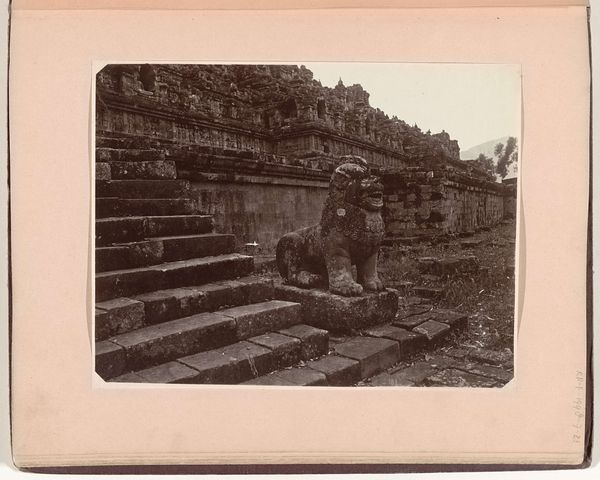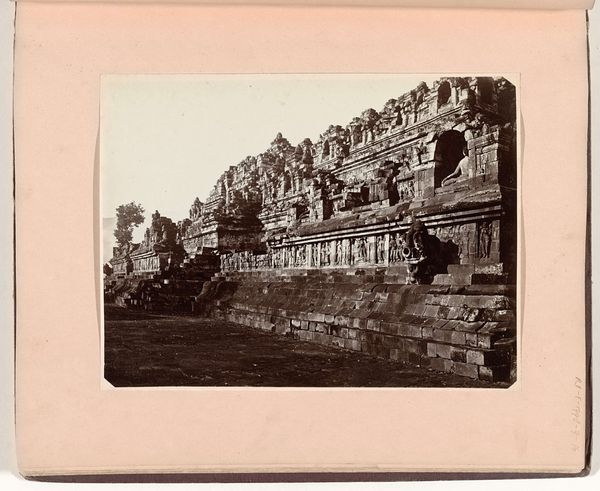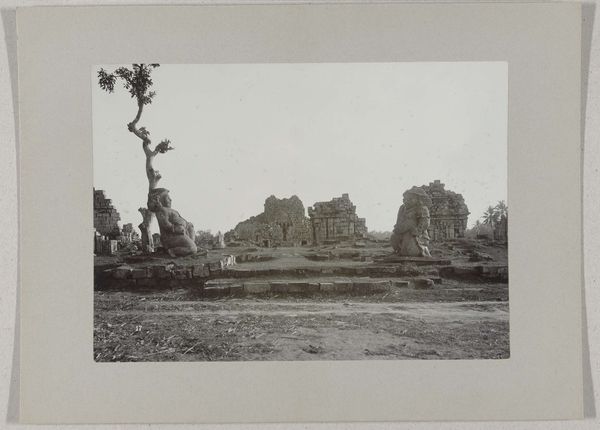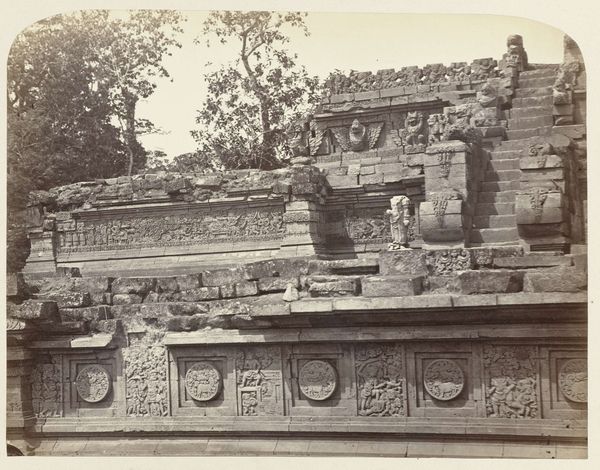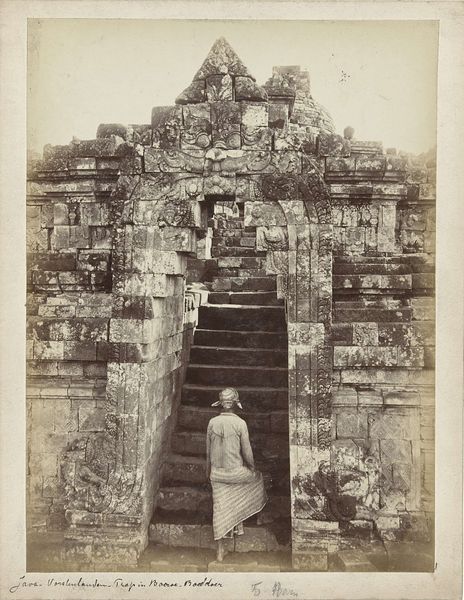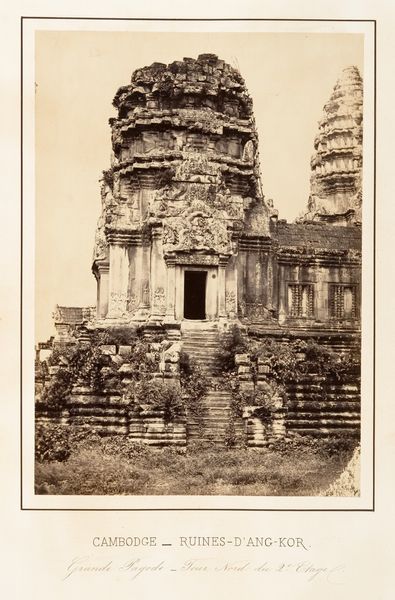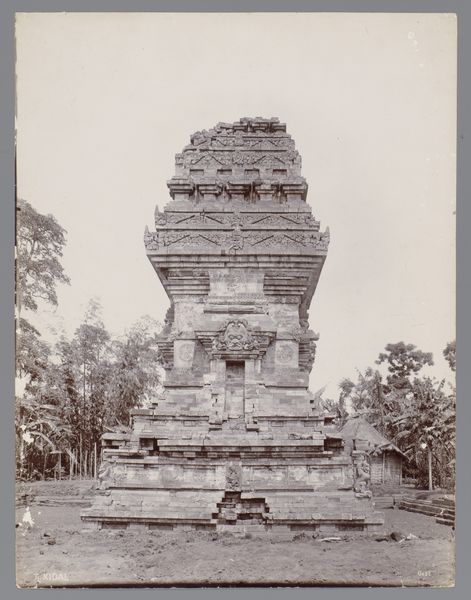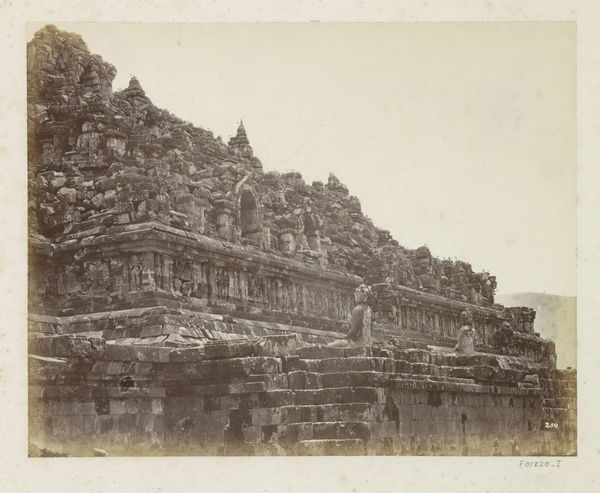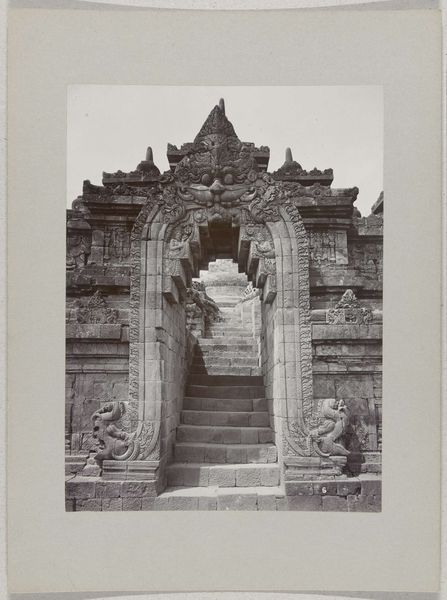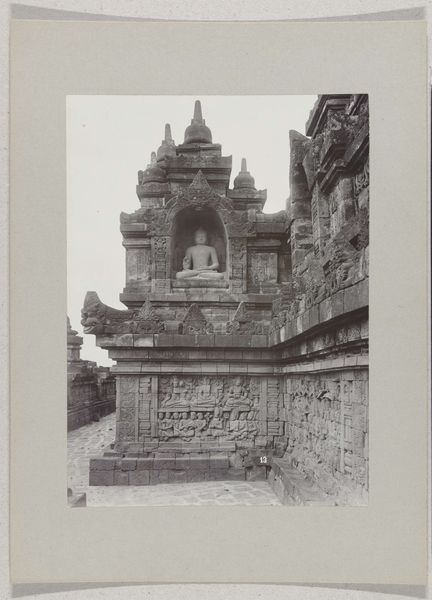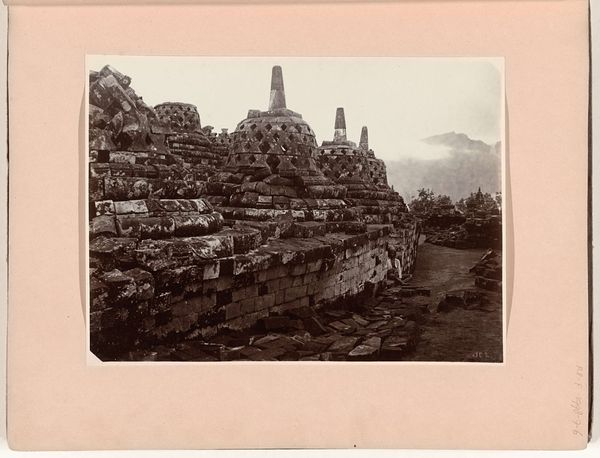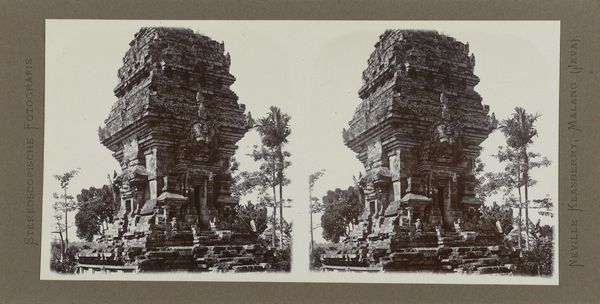
photography, albumen-print, architecture
#
asian-art
#
landscape
#
photography
#
albumen-print
#
architecture
Dimensions: height 179 mm, width 232 mm
Copyright: Rijks Museum: Open Domain
This photograph of the stairs of Borobudur was taken by C. Dietrich, a photographer working in the Dutch East Indies. The image captures the monumental scale and intricate carvings of this ancient Buddhist temple in Java. Borobudur, built in the 9th century, is a powerful example of cultural and religious exchange. Its construction reflects the influence of Indian Gupta art on local Javanese traditions. But by the time this photograph was taken, the temple had been abandoned for centuries. Photographs like this one played a key role in the colonial context of the Dutch East Indies. They documented the region's history for European audiences, reinforcing the idea of western knowledge production. How does the photograph aestheticize the ruins? What assumptions about labor, religion, or social order underpinned this aesthetic? To truly understand this image, we might consult colonial archives, travelogues, and studies of early photography in Southeast Asia. The meaning of this artwork lies not only in its aesthetic qualities but also in its historical and institutional context.
Comments
No comments
Be the first to comment and join the conversation on the ultimate creative platform.
